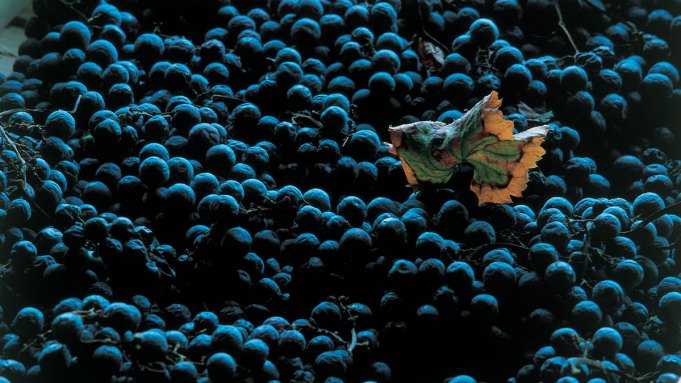It’s been said that older wine lovers drink regions and the younger set drinks varieties. While previous generations of oenophiles chose a Burgundy, Bordeaux, or Amarone—possibly without knowing the primary variety—off a wine list, a small revolution in how we drink has people ordering a glass of Pinot Noir or Merlot, often not caring where the grapes were grown. That said, it would almost be impossible outside of a small area in northern Italy to overhear anyone asking for a bottle of Corvina. Until now.
The main grape in both Amarone della Valpolicella DOCG and Valpolicella DOC wines, Corvina is known for its fresh flavors of cherry and raspberry with notes of chocolate and spice. Amarone della Valpolicella is made mainly with this variety, which must comprise between 45 and 95 percent of the final blend. A variety called Corvinone that was mistaken for Corvina for many years can account for 50 percent of the Amarone blend. Another local grape, Rondinella, can be included in amounts between 5 and 30 percent, which may be rounded out by up to 25 percent of other varieties that include Mondinella and Molinara. Produced using a three- to four-month drying process called apassimento, Amarone offers boldly concentrated flavors and high alcohol that may mask Corvina’s more delicate nature.
Sergio Zenato, founder of Zenato in the Valpolicella zone, made his first vintage of single-varietal Corvina in 2004. He named it Cresasso for the large stones (sasso in Italian) found in their estate vineyard soils combined with the prefix “cre” in reference to the cretaceous period of the Mezozoic era, when these stones were likely deposited here. He created Zenato Corvina Veronese IGT to show the potential of Corvina. “Cresasso represents our tribute to the land to which we feel deeply bound and to the most important and representative native grape variety of Valpolicella and our Costalunga Estate,” Zenato’s daughter Claudia says. While there are many entry-level, single-varietal Corvinas on the market, Cresasso is one of a small number of top-tier wines made with the grape. Unlike fresh, fruity versions, this wine is sourced from Zenato’s highest and best vineyard site and aged in French oak for two years and one more in bottle before release. In contrast, Zenato Amarone contains 80 percent Corvina that has been dried before pressing and is aged for three years in barrel.
Inside Zenato’s cellar
Zenato
Another producer of high-end Corvina is Allegrini, whose Allegrini La Poja Corvina Veronese IGT relies on rigorous grape selection and temperature-controlled fermentation prior to aging 20 months in new barrels, eight months in large used oak casks, and 10 months of bottle aging. Francesco Allegrini, CEO of Allegrini Wines calls it a “true snapshot of a vineyard in that specific year,” as opposed to his Amarone, which is made with 45 percent Corvina that also undergoes the appasimento process prior to fermentation. “We often say that Amarone is a wine made by men, while La Poja is a wine made by land and time,” he tells Robb Report.
Expect flavors of cherry, raspberry, cocoa, nutmeg, and black pepper with and hints of earthiness in a glass of Corvina. It is terrific with grilled beef or lamb, strong cheeses like Stilton or Époisses, wild boar (or heritage pork) ragu, risotto made with mushrooms, or pasta topped with truffles. Other producers to look for include Cesari, Tinazzi, Scriani, Cantine de Ora, and Scaia. Bottles from the likes of Zenato and Allegrini will age for up to 20 years, while more accessible pours are best drunk within five. IGT wines are produced with fewer regulations than DOC or DOCG wines, allowing winemakers wider leeway in terms of production yields, winemaking methods, aging time, and release dates.
We expect you will be seeing many more examples of non-DOC or DOCG single varietal Corvina as the trend for highly concentrated, high alcohol wine continues to decline. The modern age of gastronomy has ushered in a thirst for more elegant styles of wines, and tuned-in vintners are eager to comply with changing tastes in the global market. As Nadia Zenato points out, “Corvina Veronese is the backbone of a great wine such as Amarone but can express its own character even in single varietal form, with a modern and international stylistic approach.”


